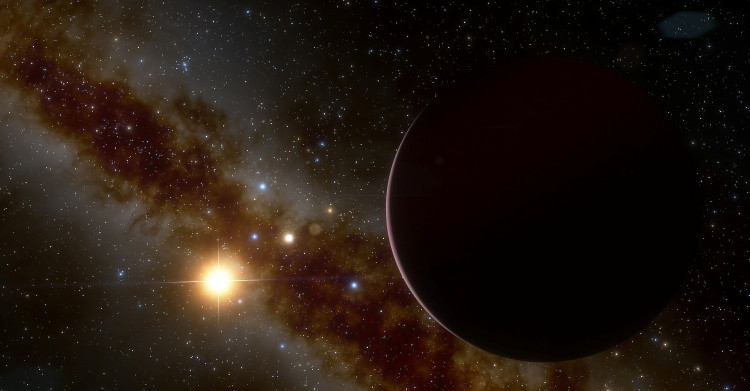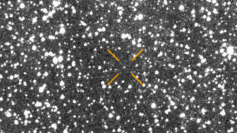An international team of astronomers has accidentally found a never-before-seen galaxy dating back from the dawn of the universe. The discovery marks the first evidence of the existence of monster galaxies, a highly regarded myth in the scientific community.
Researchers from the U.S. and Australia didn't quite expect to find traces of an unidentified galaxy hiding behind a cosmic cloud of dust. The traces turned out to be that of a once massive galaxy.
The monster galaxy was spotted using the Atacama Large Millimeter/submillimeter Array (ALMA) observatory in Chile. The team stumbled upon a faint blob of light at first, only to find out later on that the light had come from an unnamed galaxy.
"The light seemed not to be linked to any known galaxy at all," said lead researcher Christina Williams of the University of Arizona in a statement. "When I saw this galaxy was invisible at any other wavelength, I got really excited, because it meant that it was probably really far away and hidden by clouds of dust."
The research team said that the light from the galaxy was so far away that it took 12.5 billion years to reach the home planet. For this reason, the astronomers concluded that the monster galaxy may have formed during the early universe.
The newly discovered galaxy has almost the same number of stars as our own Milky Way, but it can churn out more stars compared to our galaxy, the astronomers noted.
That combination of being really old, really big, and really active was exactly the type of mythical galaxy astronomers had longed to find. And now that they have, they're looking forward to using NASA's soon-to-be-launched James Webb Space Telescope (JWST) to investigate the monster galaxy -- and potentially others like it -- in more detail.
Earlier this year, other massive star-forming galaxies have also been spotted. In August, another research team made an amazing discovery using the ALMA telescope as well, having found 39 galaxies that formed before the universe was two billion years old. The discovery has since been published in the journal Nature.
For astronomers and other scientists studying the cosmos, the recent discovery is likened to obtaining evidence that can prove the existence of the Yeti, the Himalayan folkloric ape-like creature taller than an average human. Monster galaxies have long been considered a myth or a fable, but the recent findings have paved the way for future discoveries and uncovering the mysteries of the early universe.
The research work can be read in detail at The Astrophysical Journal.



